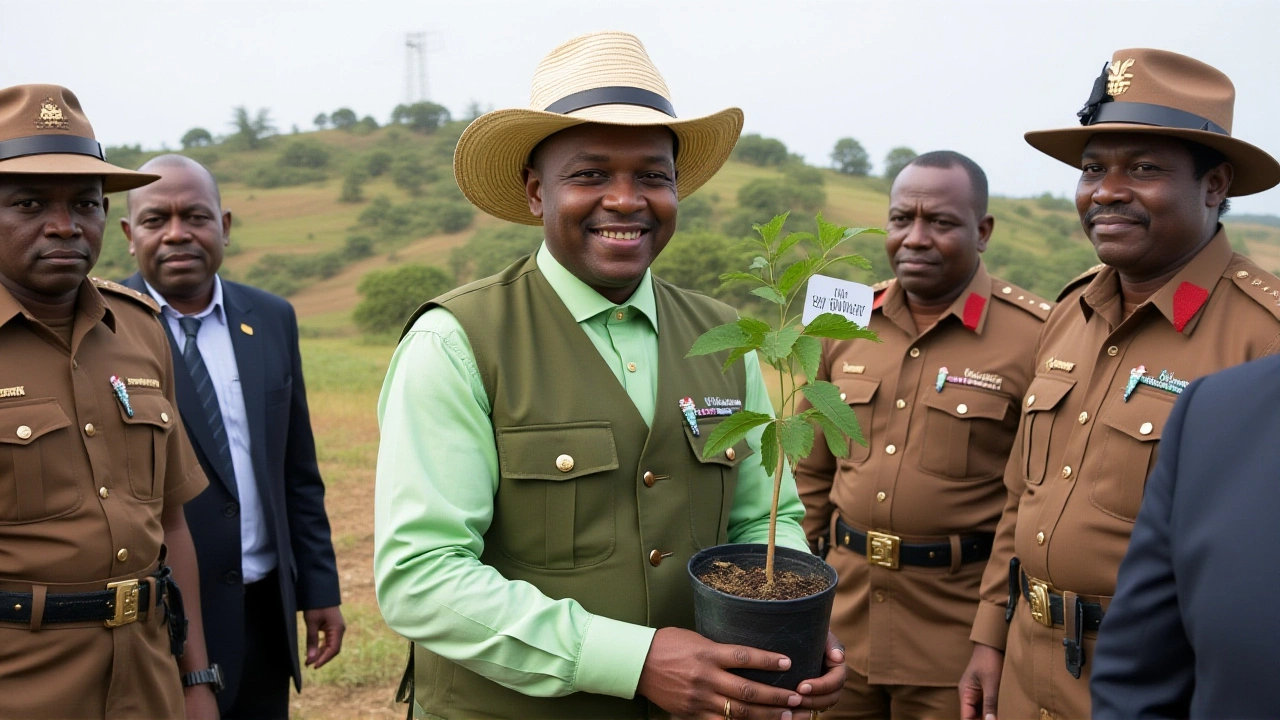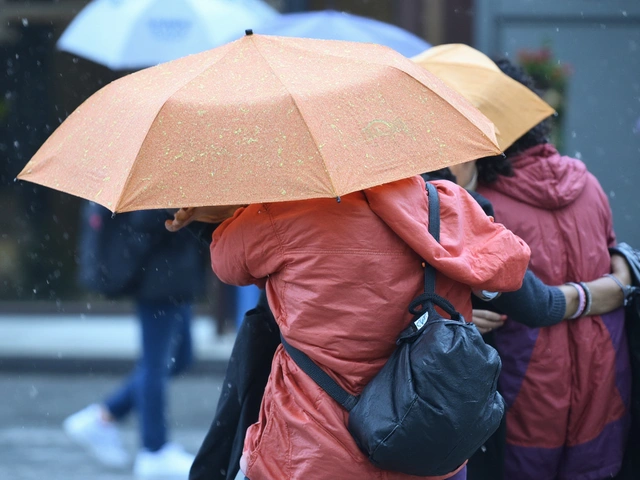When Julius Bitok, Principal Secretary for Basic Education of Ministry of Education circulated a directive in Nairobi on 9 October 2025, he set a bold target: every primary school in Kenya must plant at least 2,000 fruit trees for the upcoming Mazingira Day 2025Kenya. The move links environmental stewardship with school‑based nutrition, aiming to push the nation toward its 30% forest‑cover ambition by 2032.
Background on Mazingira Day and Kenya's Tree‑Planting Drive
Since its inception, Mazingira Day has been Kenya’s annual rally for tree‑planting, typically observed with community volunteers scattering seedlings in public spaces. In December 2022, the government launched an ambitious "15 billion tree by 2032" program, a goal that has already yielded more than 1.06 billion trees, according to a statement by Dr. Deborah Barasa, Cabinet Secretary for Environment of Ministry of Environment on 8 October 2025.
The latest thrust directs the education sector to become the backbone of the campaign, leveraging the sheer number of schools—over 30,000 primary institutions—as a distributed planting network.
The Ministry of Education's Directive
The circular, addressed to regional, county, and sub‑county Directors of Education, explicitly orders both public and private primary schools to plant a minimum of 2,000 fruit trees on their compounds on 10 October 2025. Learners must be on campus between 8:00 a.m. and 12:00 p.m., even though Mazingira Day is a public holiday. The directive also calls on alumni, teachers, and local communities to take part, turning school grounds into community orchards.
"The success of Mazingira Day 2025 depends on the effective coordination and full participation of learners, teachers, alumni, and local communities," Julius Bitok emphasized. He further instructed education officers to communicate the requirement to head teachers and to mobilise community volunteers.
Implementation Details and School Responsibilities
Each school will receive a planting kit comprising seedlings, tools, and guidance documents from the Ministry of Education. The kits focus on high‑yield fruit species such as mango, orange, and guava—crops chosen for both nutrition and market value. Schools are also expected to maintain a planting log, documenting species, numbers, and GPS coordinates for future monitoring.
To ensure the trees survive the rainy season, Gonga Mambi, Forestry Principal Secretary urged continuous care: "Fruit trees will also go a long way in improving Kenya's nutritional status, but they need to be tended through the rainy season and beyond. Friday is just the starting point."
Beyond planting, the Ministry has introduced agroforestry and bamboo development strategies aimed at creating green jobs and linking tree‑based value chains to local economies. Schools that successfully meet the quota may qualify for micro‑grants to develop tree‑fruit processing workshops, turning harvests into school‑run enterprises.
Reactions from Stakeholders
Head teachers across the country greeted the plan with a mix of enthusiasm and concern. "We are excited to turn our playgrounds into orchards, but we need resources for irrigation and security," said Mrs. Amina Odongo, head teacher of Mwea Primary School in Embu County.
Alumni groups responded swiftly. The Old Students Association of St. Mary's pledged to fund 3,000 mango trees for their alma mater, citing the dual benefit of shade for students and future income.
Environmental NGOs applauded the scale but warned about post‑planting monitoring. "Planting is only half the battle; survival rates in past campaigns have hovered around 65% without proper after‑care," noted Dr. Peter Ndegwa, senior researcher at African Forestry Institute.

Potential Impact on Nutrition and Environment
Fruit trees in school grounds could significantly improve dietary diversity for learners. A study by the University of Nairobi in 2023 found that schools with on‑site orchards saw a 12% increase in students meeting daily fruit intake recommendations.
From an environmental standpoint, planting 2,000 trees per school translates to roughly 60 million new trees nationwide—a substantial boost toward the 30% canopy target. If each tree sequesters an average of 22 kg of CO₂ annually, the initiative could offset about 1.3 million tonnes of emissions each year.
- Target: 2,000 fruit trees per primary school
- Estimated total trees: ~60 million
- Projected CO₂ sequestration: ~1.3 million tonnes/year
- Potential increase in student fruit consumption: 12%
- Additional green jobs: 5,000–7,000 in nursery management and processing
Looking Ahead: Next Steps and Challenges
Monitoring will be coordinated through the County Directors of Education, who will submit quarterly reports to the Ministry of Education and the Ministry of Environment. Satellite imagery and drone surveys are planned for 2026 to verify tree survival rates.
Key challenges include ensuring water availability in arid regions, safeguarding trees from livestock, and maintaining community engagement beyond the holiday. The ministries have announced a follow‑up funding round in early 2026 to address these gaps.
If the programme stays on track, Kenya could see a marked improvement in both forest cover and child nutrition within the next five years, setting a model for other African nations seeking integrated climate‑nutrition solutions.
Frequently Asked Questions
How will the fruit‑tree initiative affect school nutrition?
The presence of fruit trees on campuses gives students direct access to fresh produce during school meals and snack times. Evidence from pilot schools shows a 12% rise in students meeting recommended daily fruit intake, which can improve micronutrient status and overall health.
What species are being planted and why?
The Ministry prioritized mango, orange, guava, and avocado – species that thrive in Kenya’s varied climates, produce high yields, and are nutritionally rich. These fruits also have market potential, allowing schools to generate modest income through sales.
Who is responsible for monitoring tree survival?
County Directors of Education will compile planting logs and coordinate with the Ministry of Environment’s forestry officers. Satellite and drone assessments scheduled for 2026 will provide independent verification of survival rates.
Will there be funding for irrigation or maintenance?
A micro‑grant scheme was announced for schools that meet planting targets, earmarked for irrigation kits, fencing, and training workshops. An additional funding round is planned for early 2026 to address gaps in drier counties.
How does this initiative fit into Kenya’s 2032 forest‑cover goal?
With roughly 13.5% tree cover today, planting 60 million new trees via schools could add about 1.2% to national canopy coverage. Combined with ongoing reforestation projects, the effort moves the country closer to the 30% target set for 2032.






